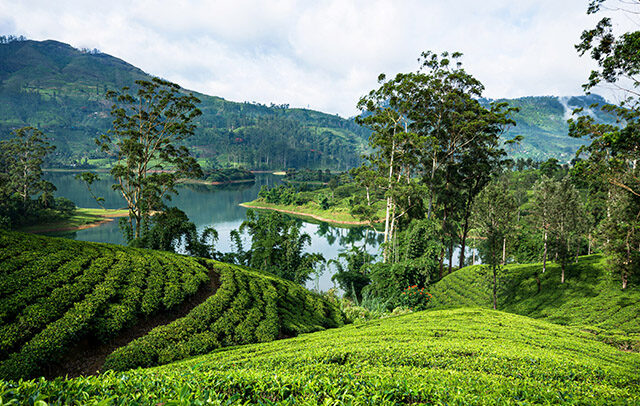CLIMATES & SEASONS
With year-round warmth, Sri Lanka enjoys a tropical climate without extreme temperatures. The weather in Sri Lanka averages approximately 30 degrees but cools to as low as 16 degrees in the hill country. With two monsoons, Yala and Maha where Sri Lanka experiences heavy rainfall on its East and West coast, it’s best to avoid visiting in May and October.
An all year-round destination, when to go to Sri Lanka ultimately depends on your preferences and interests.
Best Times to Visit Sri LAnka
DEcember to April
The winter months are the best times to visit Sri Lanka. With warm temperatures and minimal rainfall, these are some of the best times to visit the south of Sri Lanka. It is considered to be the countrywide high season and the west and south coasts are at their peak. With sunny and dry conditions, it is a perfect place to escape the cold winter months. Enjoy a private sunset sail or as sunrise whale watching experience on the azure blue waters of the Indian Ocean. Bear in mind that Christmas and New Year are popular times to visit Sri Lanka, so it’s advisable to plan well in advance.
EASTER HIGHLIGHT: Easter is a perfect time to visit Sri Lanka as the temperatures are ideal and the beaches are at their best. Sri Lankan Sinhalese and Tamil New Year is celebrated during March to April and signifies a special time in the Sri Lankan calender. Marked with many traditions and great celebration across the country, you can take participate in the traditions and enjoy the celebrations in a local home when you travel with us.
May to August
With temperatures rising to their 30’s, the south-coast remains warm but with some light monsoon showers during May. These traditional summer months are also highly favourable on the east coast which is at its peak from May to September, where you can enjoy long pristine palm fringed beaches. If culture is high on your list, then a visit to the Dambulla and a sunrise climb of Sigiriya Rock in the Cultural Triangle is a must during July to August.
AUGUST HIGHLIGHT: With locals travelling inland to the Hill Country during the summer months for the cooler climes, August is the time to visit Kandy to see the Perahera Festival. The longest surviving festival in the world and the largest festival on the island. It takes place over 10 days in July and August. This is the Buddhists’ biggest cultural event and gets progressively more elaborate over the 10 days. Expect a hugely colourful event, with 100’s of dressed elephants, drummers and dancers as they herald the sacred Tooth Relic. Book with Sri Lanka Bespoke and will place you in the best boutiques for the festival with the best seats for prime viewing.
september to November
Temperatures are still warm, but with the west coast experiencing its heaviest monsoon rainfall, it’s a great time to explore Jaffna at the northern tip of the island, followed by a trip to the North Western Province in Sri Lanka. Visit Wilpattu, one of Sri Lanka’s National Parks for a stunning wildlife immersion. Combine this with a trip to Anuradhapura in the Cultural Triangle to be amazed by Sri Lanka’s rich heritage and 3000-year history.
SEPTEMBER HIGHLIGHT: Septembers marks the end of the dry season and is an incredible time to witness the largest gathering of Asian elephants to exist on the planet in Minneriya National Park. Up to 300 elephants from different herds travel together as one with just a single goal in mind – water. Soak up this magnificent event as the elephants come to sip the sweet waters of the Minneriya Tank. Combine this with a trip to Trincomalee on the East Coast – one of the oldest cities in Asia and a major maritime seaport. Expect long sweeping beaches as far as the eye can see. With white sands and abundant marine life, it’s an incredible spot for snorkelling surrounded by coral reefs and catching sight of the largest sea mammals as they migrate through the Indian Ocean.












